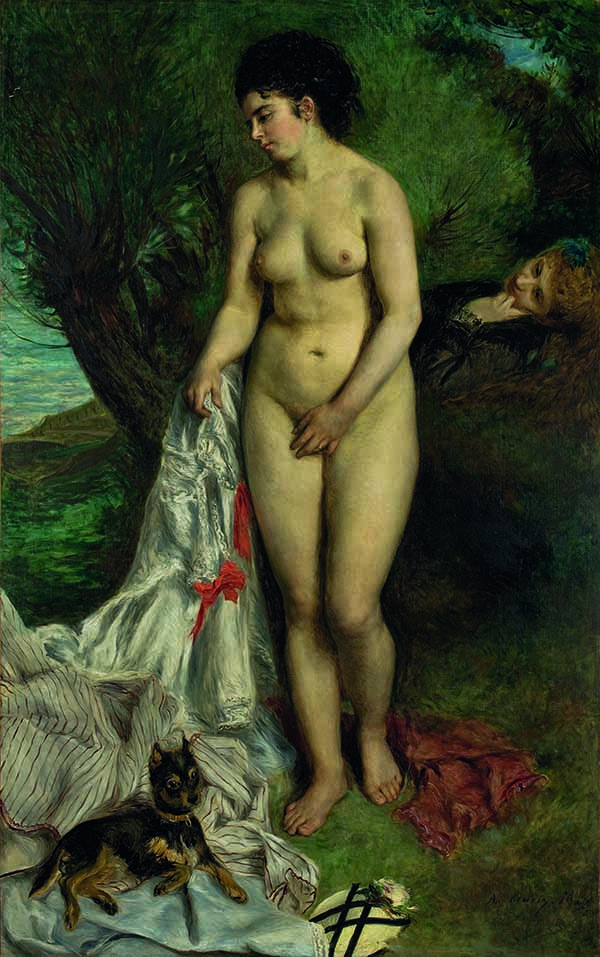Renoir: The Body, The Senses
June 8–September 22, 2019

Pierre-Auguste Renoir
Bather with a Griffon Dog - Lise on the Bank of the Seine
1870
Oil on canvas, 72 7/16 × 45 1/4 in.
Museu de Arte de São Paulo Assis Chateaubriand.
Gift of Leão Gondim de Oliveira, Indústrias Químicas e Farmacêuticas Schering S.A., Diários Associados de Minas Gerais, O Cruzeiro and Mário Simonsen, 1958, MASP.00095
Renoir and Realism
Renoir struggled to make his way in the French academic system, where the goal was to have one’s works accepted to the Paris Salon—the public exhibition in which entrance was determined by a jury. The Salon was populated with large-scale nude figure paintings—typically placed within a historical or mythological context—for they were considered the most elevated works of art within the academy’s hierarchy of genres. Renoir understood this doctrine, as in 1861 he had enrolled in the renowned studio of Swiss painter Charles Gleyre. Gleyre’s instruction primed students for admission to the École des Beaux-Arts, a preeminent art school where Renoir matriculated in 1862. Gleyre taught methods of composition, with particular focus on the skills necessary to draw the human body.
In Gleyre’s studio, Renoir formed significant friendships with fellow students Frédéric Bazille, Claude Monet, and Alfred Sisley. By the end of 1863 these young artists greatly venerated Gustave Courbet, the leader of the Realist school. Courbet had radically transformed figure painting in the 1850s by championing ordinary, imperfect, often middle-class people. Expanding on Courbet’s examples, Renoir and his circle experimented with a similar Realist approach. Like Courbet, Renoir made repeated efforts to have his monumental paintings of the nude accepted to the annual Salon, which afforded maximum exposure before the public and the promises of fame and financial security.